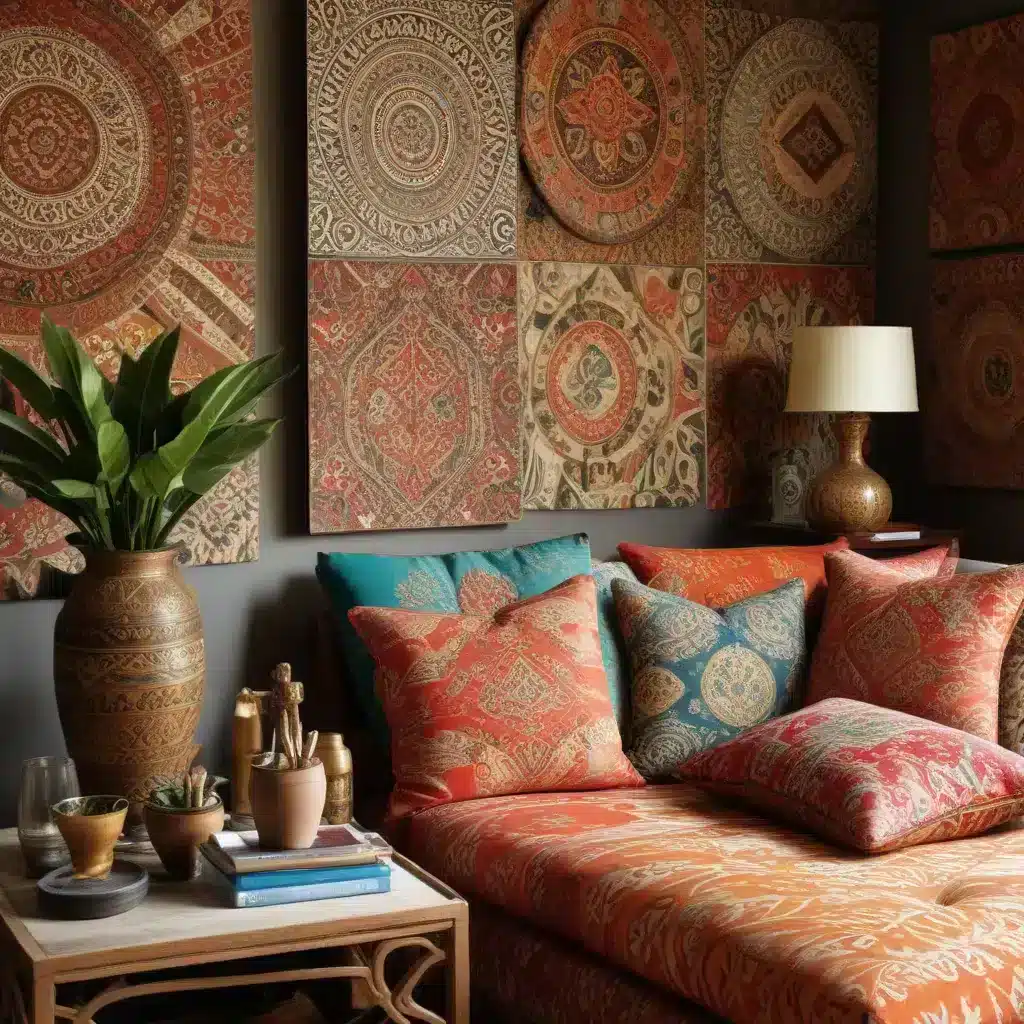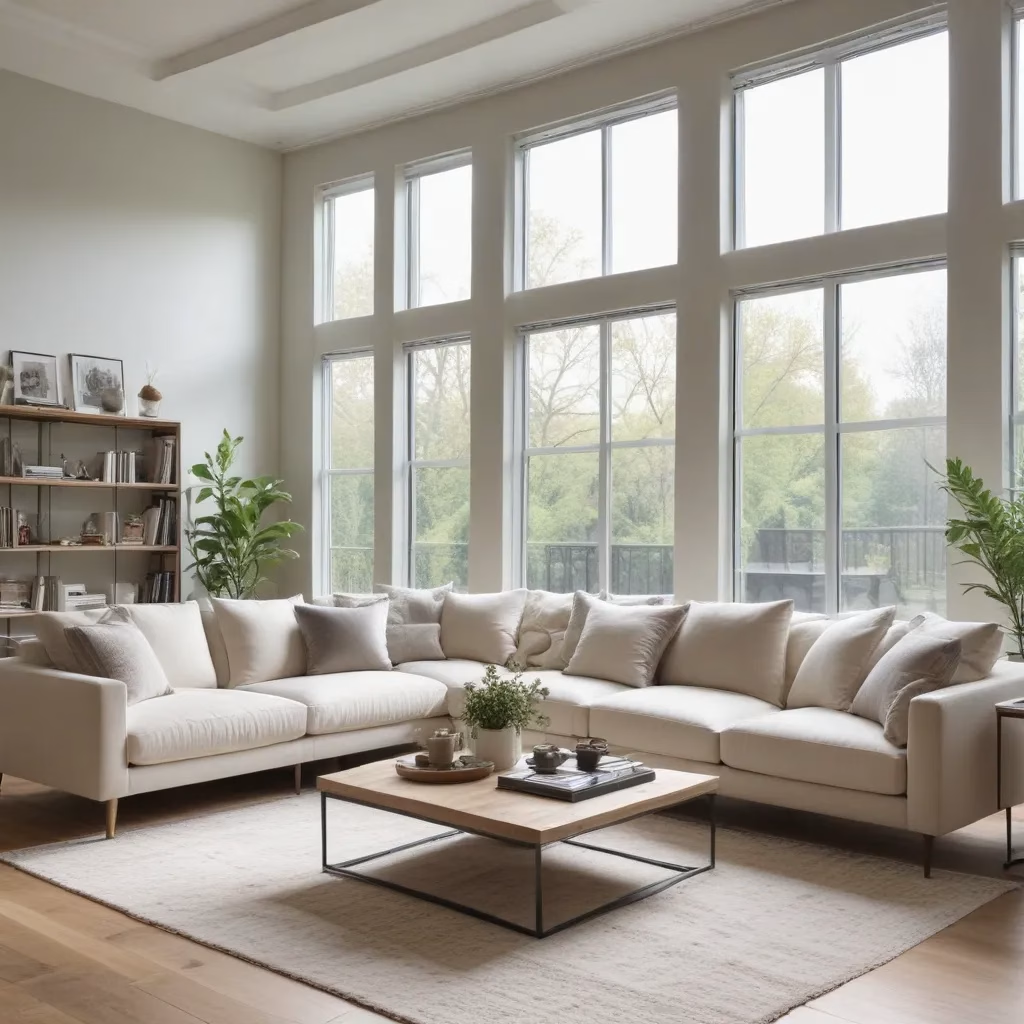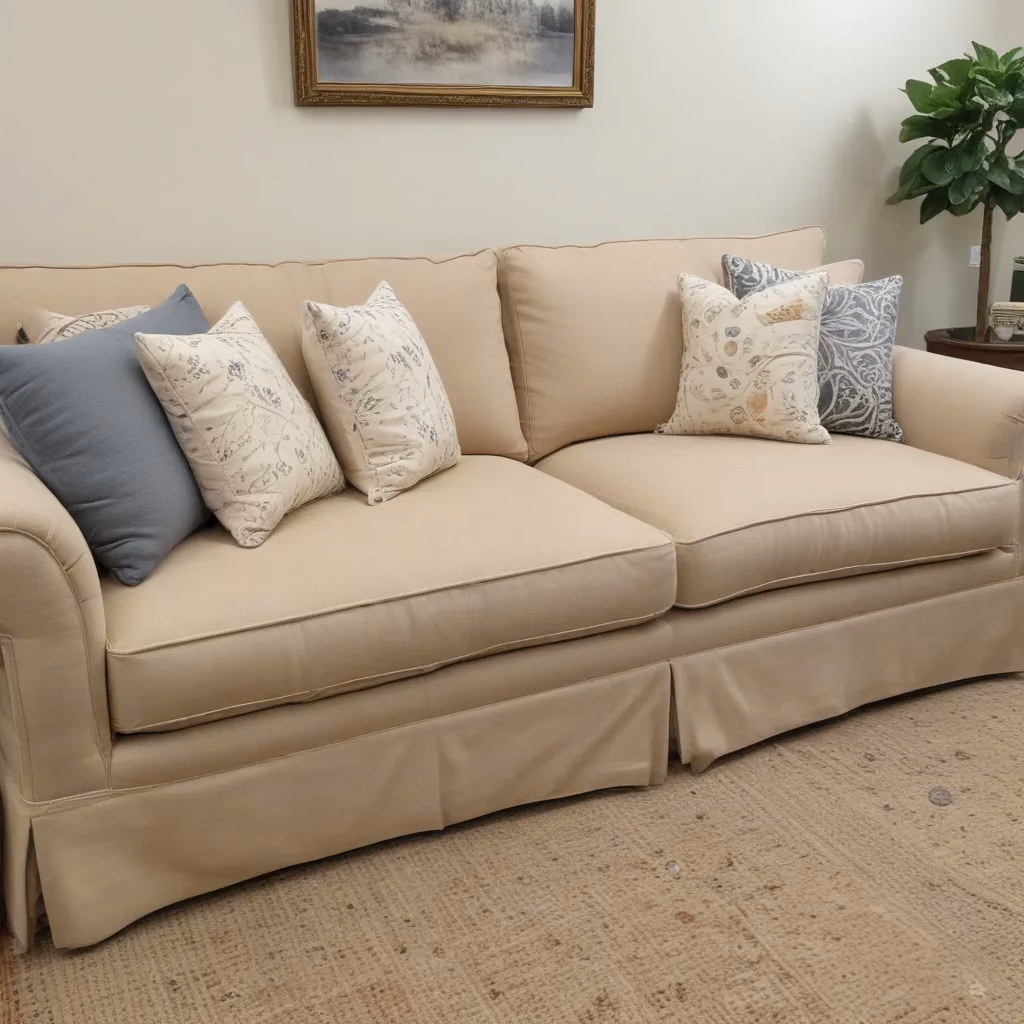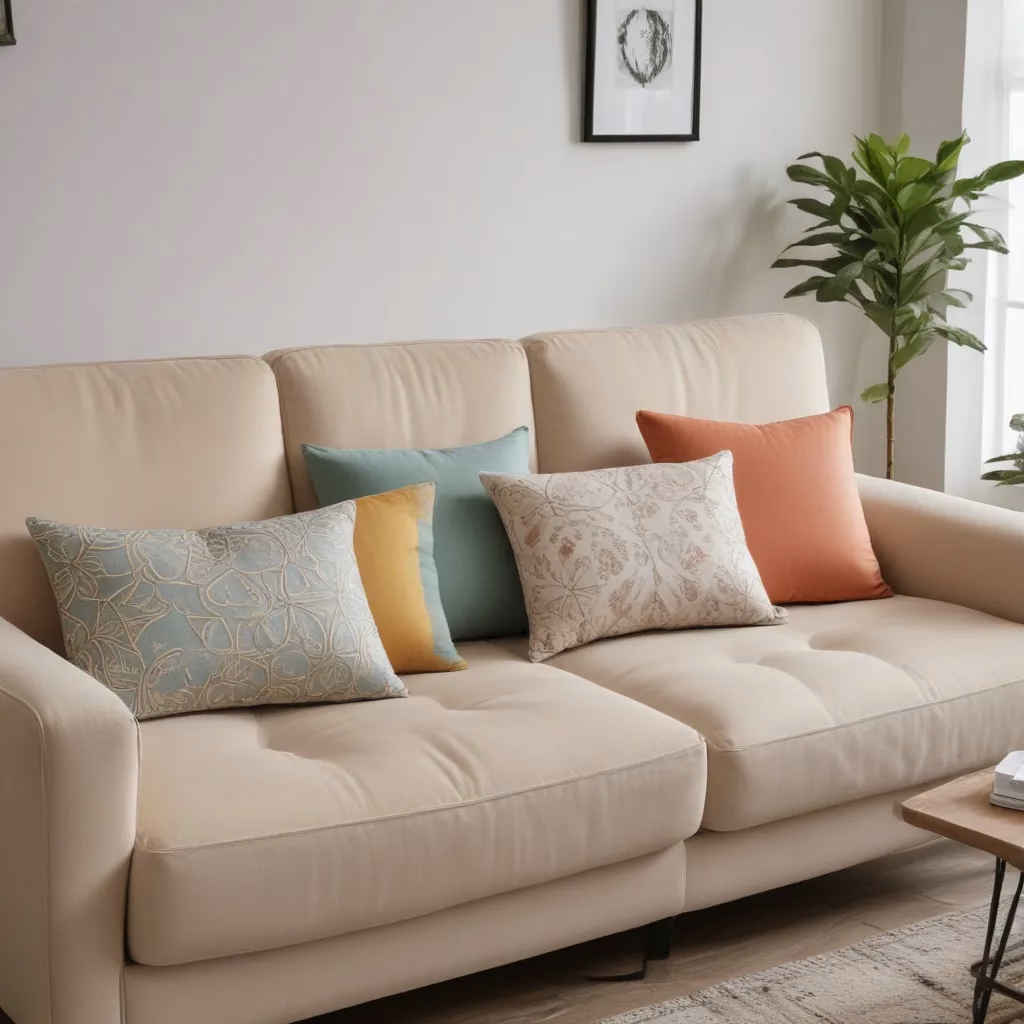
As a furniture specialist with years of experience in the industry, I’ve had the privilege of witnessing firsthand how global influences have shaped and transformed home decor trends. The fusion of cultural motifs and design elements from around the world has created a rich tapestry of styles that homeowners and interior designers alike are eager to incorporate into their spaces. Let’s take a journey through the exciting world of exotic influences and cultural fusion in home decor, with a special focus on how these trends are impacting sofa design and selection.
The Rise of Global Influences in Home Decor
Over the past decade, I’ve observed a significant shift in home decor preferences. Homeowners are increasingly drawn to pieces that tell a story and reflect a global perspective. This trend isn’t just about aesthetics; it’s about creating spaces that feel authentic, personal, and connected to the wider world.
The globalization of design has been fueled by several factors:
- Increased travel and exposure to diverse cultures
- The proliferation of social media and design blogs showcasing international styles
- A growing appreciation for artisanal craftsmanship from different parts of the world
As a result, we’re seeing a beautiful melding of design elements from various cultures, creating unique and personalized spaces that reflect the homeowner’s experiences and tastes.
Incorporating Exotic Motifs in Sofa Design
When it comes to sofas, the heart of any living space, the influence of global motifs is particularly evident. I’ve helped many clients select pieces that bring a touch of the exotic into their homes. Here are some ways this trend is manifesting in sofa design:
Patterns and Textiles
One of the most striking ways to incorporate exotic influences is through the use of patterned textiles. I’ve seen a surge in popularity for:
- Moroccan-inspired geometric patterns
- Indian block prints and ikat designs
- African mud cloth and kente cloth-inspired fabrics
These patterns add visual interest and depth to a sofa, turning it into a focal point of the room. When selecting a patterned sofa, I always advise my clients to consider the scale of the pattern in relation to the size of the room and other furnishings.
Color Palettes
Exotic influences have also broadened the color palettes we see in sofa design. Gone are the days when beige and brown were the default choices. Now, I’m excited to offer my clients options like:
- Deep jewel tones inspired by Indian textiles
- Earthy terracottas and ochres reminiscent of African landscapes
- Vibrant blues and greens echoing the Mediterranean
These rich, saturated colors can transform a living space, adding warmth and personality. When incorporating bold colors, I recommend balancing them with neutral elements to create a harmonious overall design.
Textural Elements
Texture plays a crucial role in bringing exotic flair to sofa design. I’ve noticed an increased interest in:
- Hand-woven fabrics with visible texture
- Embroidered details inspired by traditional crafts
- Tassels and fringe reminiscent of Moroccan and Bohemian styles
These textural elements add depth and interest to a sofa, making it more inviting and tactile. They also provide an opportunity to showcase artisanal skills from different cultures.
Balancing Exotic Elements with Contemporary Design
While exotic influences are exciting, it’s important to strike a balance with contemporary design elements. I always remind my clients that the goal is to create a cohesive space, not a themed room. Here are some tips I share for achieving this balance:
- Mix exotic patterns with solid, neutral pieces
- Combine traditional craftsmanship with modern silhouettes
- Use exotic accents sparingly to create focal points
For example, you might pair a sofa with Moroccan-inspired upholstery with sleek, modern side tables. Or, choose a contemporary sofa shape but add exotic throw pillows and a textured throw blanket.
Sofa Care and Maintenance for Exotic Textiles
When clients opt for sofas with exotic textiles or patterns, I make sure to provide guidance on proper care and maintenance. These unique pieces often require special attention to preserve their beauty and longevity.
Cleaning Tips
- Always check the manufacturer’s care instructions first
- Use a soft brush attachment when vacuuming to avoid damaging delicate fabrics
- Spot clean spills immediately with a clean, damp cloth
- Consider professional cleaning for intricate patterns or hand-woven fabrics
Protection Strategies
To help protect exotic sofas from wear and tear, I suggest:
- Rotating cushions regularly to ensure even wear
- Using arm covers or throws on high-traffic areas
- Keeping the sofa out of direct sunlight to prevent fading
By following these care tips, you can ensure that your exotic-inspired sofa remains a beautiful centerpiece in your home for years to come.
Sourcing Authentic Exotic-Inspired Pieces
One of the challenges in incorporating exotic influences is finding authentic, high-quality pieces. As someone who values craftsmanship and ethical sourcing, I always encourage my clients to:
- Research the origin of designs and patterns
- Look for fair trade certified products when possible
- Support artisans and small businesses that specialize in traditional crafts
By choosing authentic pieces, you not only get a higher quality product but also support the continuation of traditional craft techniques.
The Future of Exotic Influences in Home Decor
As we look to the future, I believe the trend of incorporating exotic influences in home decor will continue to evolve. We’re likely to see:
- More fusion between traditional crafts and modern technology
- An increased focus on sustainable and eco-friendly materials
- A deeper appreciation for the stories and cultures behind design elements
This ongoing evolution keeps our work exciting and allows us to continually offer fresh, inspiring options to our clients.
Creating Your Own Globally-Inspired Space
If you’re inspired to bring some exotic flair into your own home, here are some steps to get started:
- Identify cultures or regions that resonate with you
- Research traditional design elements and motifs from those areas
- Start small with accent pieces before committing to larger furniture items
- Visit Sofa Spectacular to explore our range of globally-inspired sofas and accessories
Remember, the key is to create a space that reflects your personal style and experiences. Don’t be afraid to mix and match elements from different cultures to create a unique look that’s all your own.
The Role of Texture in Exotic-Inspired Interiors
Texture plays a crucial role in bringing exotic-inspired interiors to life. In my experience, the right combination of textures can transform a space, adding depth, warmth, and visual interest. When it comes to sofas and other upholstered furniture, texture is particularly important in creating that global, well-traveled feel.
Layering Textures
One technique I often recommend to clients is layering different textures. This approach works particularly well with exotic-inspired decor. For example:
- Combine a smooth leather sofa with rough-woven throw pillows
- Pair a velvet upholstered piece with a chunky knit throw blanket
- Add a tasseled or fringed element to a sleek, modern sofa
This layering of textures creates a rich, sensory experience that’s characteristic of many global design styles.
Natural Materials
Incorporating natural materials is another way to bring exotic texture into your space. I’ve seen a growing trend towards:
- Rattan and wicker furniture pieces
- Jute or sisal rugs
- Wooden accent tables with visible grain
These natural elements add an organic, earthy feel that complements exotic-inspired sofas and decor.
Color Psychology in Exotic-Inspired Spaces
Color plays a significant role in creating the mood and atmosphere of a room. When incorporating exotic influences, understanding color psychology can help you create a space that not only looks beautiful but also feels harmonious and inviting.
Warm vs. Cool Colors
In my consultations, I often discuss the difference between warm and cool colors and their effects on a space:
- Warm colors (reds, oranges, yellows) can create a cozy, intimate atmosphere
- Cool colors (blues, greens, purples) can make a space feel calm and serene
Many exotic-inspired designs incorporate a mix of warm and cool tones. For example, you might pair a cool blue sofa with warm orange and red accent pillows, creating a balanced and vibrant look.
Cultural Color Associations
It’s also interesting to consider the cultural associations of different colors. For instance:
- Red is considered lucky in Chinese culture
- Blue is associated with protection in many Middle Eastern countries
- Green is a sacred color in Islam
Understanding these associations can add depth and meaning to your color choices, especially if you’re drawing inspiration from a specific culture.
The Impact of Lighting on Exotic-Inspired Decor
Lighting is a crucial element in showcasing exotic-inspired decor, particularly when it comes to sofas and textiles. The right lighting can enhance colors, highlight textures, and create the perfect ambiance for your globally-influenced space.
Natural Light
In my experience, natural light is ideal for showcasing the rich colors and intricate patterns often found in exotic-inspired decor. If possible, I recommend:
- Positioning your sofa near a window to take advantage of natural light
- Using sheer curtains to soften harsh sunlight while still allowing it to filter through
However, be mindful of direct sunlight, which can fade fabrics over time. UV-protective window films can help mitigate this issue.
Artificial Lighting
When natural light is limited, or for evening ambiance, consider these lighting options:
- Moroccan-inspired lanterns for a soft, diffused glow
- Floor lamps with colorful or patterned shades to complement your sofa
- String lights for a whimsical, bohemian touch
Remember, the goal is to create layers of light that enhance the exotic elements in your space.
Mixing Patterns in Exotic-Inspired Interiors
One of the hallmarks of exotic-inspired decor is the bold use of patterns. However, mixing patterns can be challenging. Here are some tips I share with my clients:
- Start with a dominant pattern, often on the largest piece like the sofa
- Choose secondary patterns that share a color with the dominant pattern
- Vary the scale of patterns – pair large prints with smaller, more intricate designs
- Include some solid colors to give the eye a place to rest
When done right, mixing patterns can create a rich, layered look that’s full of visual interest.
The Role of Accessories in Exotic-Inspired Spaces
Accessories are the finishing touches that can really bring an exotic-inspired interior to life. When selecting accessories to complement your sofa and overall decor, consider:
- Throw pillows in contrasting patterns or textures
- A colorful area rug to anchor the space
- Wall hangings or tapestries that reflect global influences
- Sculptural pieces or artifacts from your travels
These elements can help tell your personal story and create a curated, well-traveled look.
Sustainability in Exotic-Inspired Decor
As a furniture specialist, I’ve noticed a growing interest in sustainable and eco-friendly options, even within the realm of exotic-inspired decor. This trend aligns beautifully with the traditional craftsmanship often associated with global design styles.
Sustainable Materials
When selecting sofas and other furniture pieces, consider options made from sustainable materials such as:
- Reclaimed wood
- Organic cotton or linen upholstery
- Bamboo or other fast-growing materials
These choices not only support environmental conservation but often have unique textures and patinas that add to the exotic aesthetic.
Upcycling and Repurposing
Another aspect of sustainability in exotic-inspired decor is the practice of upcycling or repurposing items. This might involve:
- Reupholstering an old sofa with globally-inspired fabric
- Turning vintage textiles into throw pillows or wall hangings
- Repurposing unique objects from around the world as decor pieces
These practices not only reduce waste but also add character and uniqueness to your space.
The Importance of Quality in Exotic-Inspired Furniture
When incorporating exotic influences into your decor, particularly with large pieces like sofas, quality is paramount. In my years of experience, I’ve found that investing in well-made pieces pays off in the long run.
Craftsmanship
Look for furniture that showcases excellent craftsmanship. This might include:
- Hand-tied springs in sofas for superior comfort and longevity
- Dovetail joints in wooden furniture pieces
- Hand-woven or hand-printed fabrics
These details not only ensure the longevity of your furniture but also honor the traditional techniques often associated with exotic-inspired design.
Durability
When selecting fabrics and materials, consider their durability, especially for frequently used items like sofas. Some durable options that work well with exotic-inspired decor include:
- Leather, which develops a beautiful patina over time
- Tightly woven synthetic blends that resist wear and fading
- Performance fabrics treated to resist stains and moisture
By choosing quality, durable pieces, you ensure that your exotic-inspired decor will continue to look beautiful for years to come.
Creating a Cohesive Look with Exotic Influences
One challenge I often help clients navigate is creating a cohesive look when incorporating exotic influences. It’s easy to get carried away with different patterns, colors, and textures, resulting in a space that feels chaotic rather than curated.
Establishing a Color Scheme
Start by establishing a color scheme that ties your exotic elements together. This might involve:
- Choosing a dominant color from your sofa or a key textile piece
- Selecting complementary colors to create balance
- Using neutrals to ground the space and prevent overwhelm
A well-thought-out color scheme can help diverse elements feel harmonious and intentional.
Creating Visual Flow
To create visual flow in a room with exotic-inspired elements:
- Repeat colors and patterns in different areas of the room
- Use similar textures or materials to create continuity
- Ensure there’s a balance of busy and calm areas
This approach helps guide the eye around the room, creating a sense of cohesion and purpose.
The Role of Personal Experience in Exotic-Inspired Decor
One of the most rewarding aspects of incorporating exotic influences in home decor is the opportunity to reflect personal experiences and memories. I always encourage my clients to think about their own travels, heritage, or cultural interests when selecting pieces.
Incorporating Travel Souvenirs
If you’re a traveler, consider ways to incorporate souvenirs or mementos into your decor:
- Display textiles from your travels as wall hangings or throw pillows
- Use unique objects as accent pieces on coffee tables or shelves
- Frame photos or art purchased abroad to create a gallery wall
These personal touches add authenticity and meaning to your exotic-inspired space.
Honoring Heritage
For those with multicultural backgrounds, exotic-inspired decor can be a beautiful way to honor your heritage:
- Incorporate traditional patterns or motifs from your culture
- Display family heirlooms or artifacts
- Choose color schemes that reflect your cultural background
By infusing your space with elements of your personal history, you create a truly unique and meaningful environment.
The Evolution of Exotic-Inspired Design
As we wrap up our exploration of exotic influences in home decor, it’s interesting to consider how this trend has evolved over time and where it might be heading.
Historical Context
The fascination with exotic design elements is not new. Throughout history, we’ve seen periods of intense interest in “foreign” aesthetics:
- The Chinoiserie trend in 18th century Europe
- The Egyptian Revival style following the discovery of Tutankhamun’s tomb
- The popularity of Moroccan-inspired decor in the mid-20th century
These trends have often coincided with increased global trade and cultural exchange.
Current Trends
Today’s approach to exotic-inspired design is more nuanced and respectful than in the past. We’re seeing:
- A focus on authenticity and ethical sourcing
- Appreciation for the cultural context of design elements
- Fusion of traditional techniques with modern design
This evolution reflects a growing global consciousness and respect for diverse cultures.
Looking to the Future
As we look to the future of exotic-inspired design, I anticipate:
- Continued interest in sustainable and ethically-sourced global goods
- More collaborations between international designers and artisans
- Increased use of technology to bring global design to a wider audience
These trends promise to keep the world of exotic-inspired decor fresh and exciting for years to come.
In conclusion, incorporating exotic influences and global motifs into your home decor can create a rich, personalized environment that reflects your tastes, experiences, and values. Whether you’re drawn to the bold patterns of Morocco, the earthy textures of Africa, or the vibrant colors of India, there’s a world of inspiration to explore. Remember, the key is to create a space that feels authentic to you, balancing exotic elements with your existing decor to create a harmonious and inviting home.
As you embark on your journey of incorporating exotic influences into your home, don’t forget that the sofa often serves as the anchor for your living space. For a wide selection of sofas that can complement your globally-inspired decor, visit Sofa Spectacular. Their range includes pieces that can serve as the perfect foundation for your exotic-inspired interior, whether you’re looking for bold patterns, rich textures, or unique silhouettes.



